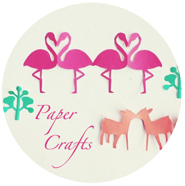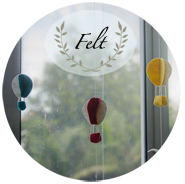One of the foundational concepts of teaching a child art is to enhance their observational and interpretation skills of how art consists of shapes, lines and curves.
The art piece that we explored was Squares with Concentric Circles, from the artist Kandinsky. This piece was chosen to teach the illustration of squares and circles in art, as well as, the technique of blending with oil pastels.
Here’s how I incorporated the concept of open-ended process to a structured art experience in my home-learning art lessons: I introduced to my son K in this lesson of abstract art.
 Squares with Concentric Circles by Wassily Kandinsky, 1913
Squares with Concentric Circles by Wassily Kandinsky, 1913
Here are the tips for this lesson plan :
1) Introduce the child to Kandinsky, if the child is below 7 years olds, just share simple facts about when he was born, his country, some of his works and when the artist died.
Here are some useful links : http://www.ibiblio.org/wm/paint/auth/kandinsky/ – Here is a good video with an animation of some of Kandinsky’s works.
2) Gather as many samples of Kandinsky creations, best shown through a computer screen. Ask your child, what he notices from Kandisky creations; shapes, colors, size of visuals, placement or anything else that they see.
3) Show the child a visual of one of Kandinsky’s most famous creation; Squares with Concentric Circles and encourage him/her to try their own creation of the art piece.
4) Divide the drawing paper into 8 equal squares and draw the line in pencil for the child. I do recommend that for kids below 7, the paper can be divided into 4 or 6 equal parts instead, as it can get rather tiring when it comes to having to color all 8 squares at one sitting. 
5) Encourage the child to draw circles in the squares with a pencil. The child can draw as many circles as he/she likes in the boxes.
6) Then color in with either paint, crayons, color pencil, and highlight that they can use any color that they prefer. I used oil pastels with K, as I took the opportunity to explore blending with oil pastels with this activity.
As a further extension of this activity for kids above 6 years old; search for a variety of classical music with different moods. Tell the child to pick the colors that suit the different moods and that they can translate the different moods through the colors or the brush strokes that they use on each of the circles in specific squares.

Here is a video on blending with oil pastels, if you plan to also teach your child the techniques of simple blending.
7. Math integration – I went with a total of 8 separate squares of circles for K, but as I expected, it got rather tiring for him to complete the full artwork.

Some Insights :
I was careful to take note that this was not a situation where he lacked motivation and hurriedly put something on paper and then saying, “Done.” He took extra care and effort in drawing, blending the oil pastels and completed the 5 squares with circles in 45 minutes without stopping to take a break, then finally exclaiming that he was tired and wanted to stop.
Being an advocate of child-led methods through how children can learn art, I did not push him to finish it. I did not see that it was necessary for him to re-visit this art piece being an abstract work to start with, and asked if he planned to continue this.
He asked if the artwork could still be unfinished, as he wanted it to look different from the Kandinsky piece. I told him that there is no right or wrong way when it comes to presenting art especially when it comes to abstract pieces. I explained to him that sometimes art can be presented in an unfinished format, and it could be very well be his interpretation of this project.
Nevertheless, it was an excellent opportunity to seamlessly integrate math concepts into his unfinished art piece.
We counted the squares, number of circles in each square, the number of colors he used in each square and I further added on by using math cubes and demonstrated equations of 5 + 3 = 8 and 8 – 5 = 3, using his incomplete art work. 
The child will learn about how shapes are used in abstract art, interesting information about a Russian abstract artist, explored the techniques of the artist in his own open-ended way, blended colors by using oil pastels and explored concepts in Math with his artwork.
A structured art activity (explored with an open-ended outcome) can be beneficial for a home-learning art lesson, to help drive specific learning objectives during the process and give the child room to develop his creativity.


























